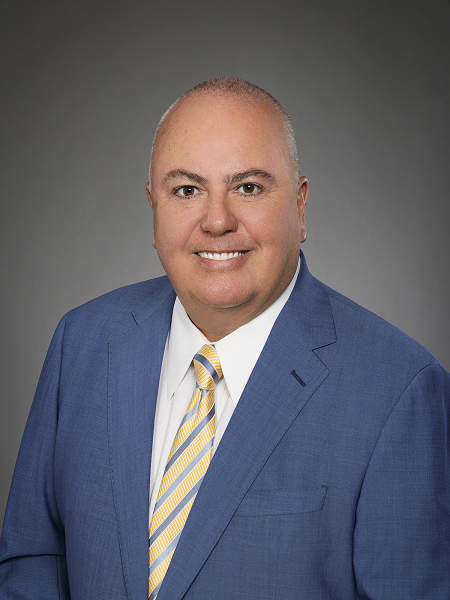Long-Term Treatment Errors
In many cases, medical malpractice claims address a single instance of doctor negligence. In these cases, the patients sue shortly after the doctor’s negligence has been committed.
However, in some malpractice cases, the negligent treatment isn’t discovered for years, or continues for years before the patient realizes it. If this is the case, victims still have legal recourse that allows them to seek damages for the wrongs committed against them.
If you have been injured by long-term malpractice errors, contact a medical malpractice lawyer. Whether your negligent treatment was yesterday or decades ago, your case may still be viable. Lytal, Reiter, Smith, Ivey & Fronrath offer free consultations that can help you determine if you can sue for damages for your injuries.
Contact our firm today to schedule your no-obligation appointment.
What are long-term treatment errors?
Long-term treatment errors are any instance of medical malpractice that is either ongoing or discovered late after the procedure occurred. These errors can include:
- Continuous prescriptions of unnecessary or incorrect medications
- Birth injuries discovered later in life
- The discovery of a foreign object left inside of a patient years later
- Unnecessary treatment for an ailment the patient does not have
- Ongoing treatment for a misdiagnosed disease
Many patients believe that they must file a medical malpractice claim immediately after being injured. However, this is not the case. Although statutes of limitations exist, the United States legal system makes allowances for individuals who have a long-term malpractice error. These individuals can use one of the many rules that allow patients to sue long after treatment if they meet certain criteria.
When can you sue for medical malpractice?
If you have been injured by your medical practitioner, you can file a medical malpractice lawsuit with the help of an attorney.
Typically, you would sue as soon as possible following a personal injury. With medical malpractice, it can take months or years for the negligent treatment of your doctor to be brought to your attention.
Unlike personal injury claims or car accident lawsuits, medical malpractice plaintiffs have legal recourse that allows them to present their case to a court after the statute of limitations has expired.
Discovery Rule
Many states have policies that the statute of limitations does not begin until the injury has been discovered. However, if the injury reasonably should have been discovered earlier, such as with regular doctor’s visits, the clock may start earlier than a patient realizes.
The discovery rule ensures that patients are not stopped from filing reasonable claims for long-term effects from treatment errors. For example, a patient who discovers a foreign object in their body left from surgery would be unable to file a claim if the two-year statute of limitations in Florida had expired. But with the Discovery Rule, they can file their claim up to two years from the date of their discovery.
Continuous Treatment Rule
If a doctor is continuing to treat a patient for the condition that is related to their negligence, then the patient’s statute of limitations does not begin until the doctor stops their treatment.
For example, if a patient who is treated for a leg injury gets surgery from a doctor who is negligent and causes further issues. The doctor continues to treat the patient for their leg injury for many years. The patient can file a lawsuit at any point during the treatment period. Once the doctor stops seeing the patient, the statute of limitations begins.
Infancy Rule
The infancy rule extends the statute of limitations for years after a child’s treatment to allow for the development of injuries to become apparent. This rule ends when the patient is 18 years of age at the latest.
Babies who are injured due to birth issues may not show signs of their injuries for years. Brain damage or speech impairment would not be obvious until the child is five. This allows parents the opportunity to identify issues in their child due to negligent treatment by a medical professional.
Statute of Limitations
Statutes of limitations are legal deadlines for filing a claim of any sort. Every state has a variety of statutes of limitation for different claims. It is important to know when to file a legal claim for your case so you do not lose your right to damages.
If you fail to file within the statute of limitations and your case is not applicable for the long-term malpractice errors rules, then you will likely never have your case heard by a judge.
Damages You Can Collect
Damages will compensate you financially for the financial and emotional losses that you suffered as a result of your injury. These include the treatment costs you endured for the incorrect treatment and for any treatments going forward to correct the injury.
Contact a Medical Malpractice Attorney Today
Lytal, Reiter, Smith, Ivey & Fronrath believe that every individual should feel safe entrusting their care to a medical professional. When doctors abuse this trust by behaving negligently and injuring patients, they deserve to be punished.
We make examples of doctors who have injured our clients with long-term malpractice errors. Our experienced attorneys ensure that our clients get the compensation they deserve while showing other medical professionals that we won’t stand by and let them hurt our community.
Call us today for a free consultation.
Call 561-655-1990OR
Send us a message
To schedule your free, no-obligation consultation today.
You don’t pay until we win
Discover your legal options today.
Our experienced West Palm Beach personal injury lawyers have successfully managed a wide variety of complex cases. We are dedicated to helping you get the compensation you deserve.
Our skilled attorneys handle car accident cases with the expertise needed to navigate the legal complexities and secure maximum compensation for our clients.
Truck accidents require specialized knowledge and resources. Our team is well-equipped to tackle these challenging cases and fight for your rights.
Losing a loved one is devastating. Our compassionate lawyers are here to support you through this difficult time and pursue justice on your behalf.
Motorcycle accidents can result in severe injuries. We are committed to advocating for motorcyclists and ensuring they receive fair compensation.
Medical errors can have life-altering consequences. Our attorneys have the expertise to hold healthcare providers accountable and seek justice for victims.
Protecting the rights of nursing home residents is a priority. Our dedicated lawyers work tirelessly to expose and rectify instances of abuse and neglect.
Our Recent Settlements



Testimonials
What our clients say about us…
Discover your legal options today.Don't pay for someone else's negligence. Let us help.
"*" indicates required fields
Office Locations
-
515 N Flagler Dr 10th floor
West Palm Beach, FL 33401 -
110 SE 6th St
Ste 1410
Fort Lauderdale, FL 33301 -
2200 Broadway Space 301
Fort Myers, FL 33901 -
4300 TBC Wy suite 200
Palm Beach Gardens, Florida 33410
-
1850 SW Fountainview Blvd Ste 207
Port St. Lucie, FL 34986 - 2700 N Military Trail Suite 360, Boca Raton, FL 33431
- 1507 Riverview , Melbourne, FL 32901
- Phone: (561) 655-1990
- Fax: (561) 832-2932
- Español: (561) 833-1964
- EMAIL: info@foryourrights.com
COPYRIGHT © 2024 LYTAL, REITER, SMITH, IVEY & FRONRATH
PRIVACY POLICY
Important Notice: Safety is our top priority at Lytal, Reiter, Smith, Ivey & Fronrath. You can access our services from home via phone, online chat, Facetime, or Zoom. Our aim is to provide justice while safeguarding everyone’s health.
Developed and Optimized by

Select your location
Leave a review for
Leave a review for
Leave a review for
Leave a review for
Leave a review for
Leave a review for
Leave a review for


